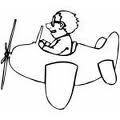offline
- ray ban11
- Legendarni građanin

- Pridružio: 17 Sep 2010
- Poruke: 24208
|
Evo nam nekih detalja ....
Citat:N019 / Rubin / RPLK-29 / S-29
NATO: "Slot Back"
OKB: Phazotron NIIR
Based on the work done by NPO Istok on the experimental Soyuz program, Phazotron NIIR were tasked with producing a modern radar for the MiG-29. Originally intended to have a planar array antenna and digital signal processing, and a range of 100km against a fighter target, it soon became clear that this would not be achievable, at least not in a radar that would fit in the MiG-29's nose. Phazotron NIIR reverted to a developed version of the twist cassegrain antenna used successfully on the Sapfir-23ML, and a hybrid analogue/digital design using an analogue signal processor (like early Western pulse-doppler radars such as AWG-9) and a TS100 digital main processor. This could achieve 170,000 operations per second, had 8K RAM and 136k ROM, was built using medium scale integration ICs and weighed a hefty 32 kg. N019 operates in X band around 3cm.
Radar Modes
The following descriptions are generally taken from the MiG-29 (9.12B) export version manual.
Radar scan limits in azimuth: +-65°
Radar scan limits in elevation: +56°, -36°
Mode "V" (Vstryehchya) : Encounter
High PRF mode for optimal detection range against closing targets. Display is calibrated to a maximum range of 150km, which would only be achievable for a large target. Cooperation mode with the IRST must be turned off.
Detects targets from 30m to 23,000m altitude which are closing at a range rate of 230 - 2500km/h.
Target can be up to 10,000m above or 6,000m below the carrier aircrafts altitude (snap-up or snap-down)
A typical 3 sq m RCS fighter can be detected at 50-70 km and tracked at 40-60 km. Target flying below 3,000m reduces the minimum detection range to 40km and tracking range to 30km, though maximum ranges remain the same.
Two basic scan patterns are used. A 6 bar raster scan is used under GCI control. This scan covers 40 degrees in azimuth at ranges up to 30km, 30 degrees at ranges of 30-55 km, and 20 degrees above 55km, with the direction of the scan cued by CGI command towards the target.
A 4 bar raster scan mode is used to acquire a target manually. This mode scans a constant 50 degrees azimuth zone, and it is expected that the rough direction to target will be given by ground control.
There is no scan pattern for full azimuth range scanning. The 130° scan area is divided into 3 sectors. Left sector is -65° to -15°, centre sector covers -25° to +25°, right sector from +15° to +65°, giving overlapping coverage of the full 130° scan limits. The pilot must manually select which sector to scan.
Mode "D" (Dogon): Pursuit
A medium PRF mode usable for all aspect engagements including tail-on engagements, though due to its short detection range it is generally reserved only for use in tailchase engagements. Display is calibrated to a maximum range of 50km, which is achievable only against a large target. When "Cooperation" mode is selected, the radar is automatically switched to "D" mode and will scan with the IRST.
Detects targets from 30 m to 23,000 m altitude which are closing or receding at a range rate of 210 - 2200 km/h.
Target can be up to 10,000m above or 6,000m below.
Range against a typical 3 sq m RCS fighter target is
Above 3000m: 25-35km search and 20-35km track
Below 3000m: 20-35km search and 18-35km track
500-1000m: 15-30km search and 13-25km track
Scan coverage is 40° in azimuth, 16.5° in elevation at ranges below 20km. Above 20km, scan coverage is 30° in azimuth, 13.5° in elevation.
Mode "AVT" (Aootomaht) Automatic
Automatic mode uses a mixture of High and Medium PRF to give optimal all aspect detection. It generates a display calibrated to a maximum range of 100km. It is considered to be quite problematic, particularly on the N019EB with downgraded Ts100 processor, overloading the data computer and generating numerous false returns. It is primarily intended for use when lacking information from the ground station concerning the target's direction.
Mode "BL BOY" (Bleezhniy Boy) Close Combat
Close Combat mode overrides all other modes. It uses a + 37°/ -13° vertical scan that is 6° wide and provides semiautomatic target acquisition from 250 m to 10km in range, though it is not slewable but fixed ahead only. Targets can be tracked in a closure rate range from +300 meters/second to -500 meters/second.
Submode "SNP" (Soprovazhdenie Na Prokhode) Track-While-Flyby
Track-while-flyby mode allows the simultaneous tracking of up to 10 targets while remaining in scan mode. The target with the highest rate of closure is designated the most dangerous, and marked on the display. The TSVM computer calculates missile launch parameters for the most dangerous target. As the range to target approaches the calculated maximum missile launch range, the radar will automatically transition to tracking mode to allow missile launch at maximum range with minimal warning to the target (due to remainng in scan mode as long as possible). It is thought that the radar cannot scan for new targets whilst in this mode, but can only keep track of the 10 known contacts.
N019EA Export variant for Warpac countries only. Slightly downgraded but uses same processors as N019.
N019EB Export variant for general export. More downgraded. Less capable TS100.02.06 digital processor, more prone to overloading.
N019M Topaz Updated version, tested from 1986, entered limited production in 1991. Slightly lighter at 350kg. Has increased ECM resistance, new software, advanced built-in monitoring system. New Ts101M computer eliminates the processor overload problems of the N019, going from the Ts100's 170,000 to 400,000 operations per second whilst weighing less, just 19kg, and with doubled MTBF of 1000h. N019M allows two targets to be engaged by two active radar homing or heat seeking missiles simultaneously. Range increased slightly to 80km. Intended to be fitted to MiG-29 (9.13) in second stage upgrade, about 16 aircraft with N019M are thought to have entered service with the VVS.
N019ME Topaz Export version of Topaz, slightly downgraded.
N019MP Topaz Further modified Topaz proposed for MiG-29SMT. Uses Baguet series processor. The maximum range remains the about the same, but the radar can detect 20 targets simultaneously, track four, and engage two. The radar has also basic air-to-ground functions, like ground mapping mode, acquisition and engagement of sea targets with radar homing missiles, and ground targets with unguided weaponry under any weather conditions, day and night. The NO19MP can generate maps of 15x15, 24x24, 50x50 or 77x77km with a resolution of 15m. Radar imagery can be transmitted via datalink to GCI centres or A-50 AWACS aircraft. Targets visible on the radar map can be designated by the pilot (using a joystick) or ground control, and used to cue TV-guided missiles, whose higher resolution imagery can then be displayed or transmitted to the GCI or A-50 controller as well. Performance against slow flying helicopters was improved as well as resistance to jamming. Uses Doppler beam sharpening techniques. Not known to be in service.
N019M1 This latest upgraded radar proposal from Phazotron retains the antenna and transmitter block assemblies but replaces pretty much all the rest of the radar. It introduces new fully programmable digital processing, giving 30-50% greater range in air-to-air search and track. Greatly improved true TWS mode, with the ability to continue searching for new targets while tracking 10. 4 targets can engaged at once with R-77 missiles. 4 different close combat modes. Has raid assessment mode, and target class recognition. Air to surface modes include Real beam, DBS, SAR (5x5m), and moving target detection. Compatible with the Kh-31A/Kh-35A. Allows target handoff to TV. Collision alarm system. It is being touted as a low cost upgrade for existing MiG-29 operators.
Citat:KOLS / Izdeliye 13Sh / OEPS-29
OKB: NPO Geophyizika

Fitted to the MiG-29A, KOLS is a combined IRST/LR device. All aspect device. Acquires targets independently, or with data input from the radar. Can detect a non-afterburning fighter at a range of 12-18km. The collimated laser can provide ranging data from 200-6500m accurate to 3m. Scanning limits are ±30° azimuth, -15°/+30° elevation.

Operates in several scanning modes. In large FOV mode scanning is ±30° azimuth, +30°/15° elevation. In small FOV mode scanning limits are ±30° azimuth and ±15° elevation. Close combat mode scans +16° to -14° by 4°. Lock-on mode scans 6° x 4°. Target tracking rate is up to 30°/sec.
KOLS is able to reject flares only if the combined signature of the flares is less than the target.
Targets are displayed on the same display as the radar.
 [Link mogu videti samo ulogovani korisnici] [Link mogu videti samo ulogovani korisnici]
Citat:KOLS radi i u `V -režimu`. Mnogo vežbi smo proveli presretanjem ciljeva u PPS putem KOLS-a i to sa ciljevima na većoj i manjoj visini u odnosu na let lovca. Radar je obično bio na "dežurnom režimu" tj. nije isijavao i odavao protivniku informaciju o ozračenju.
Malo je pričano o instrumentalnom navođenju na cilj i sistemu LAZUR, kada radar ne radi već je u "dežurnom režimu" jer ne isijava. KOLS radi i pasivno prati stanje u prednjoj polusferi. LAZUR sistemom pilot dobija podatke o poziciji cilja ( na instrumentima mu se postavljaju pozicije kako bi avion doveo u zonu cilja (nema govornih radio- poruka) i kad dođe u zonu cilja i sa centra sa zemlje koji LAZUR sistemom navodi avion ,se bez pilota može startovati radar na isijavanje, bez komande pilota, kako bi se u kratkom vremenskom periodu izvršila akvizicija cilja, zahvat i stekli uslovi za lansiranje.
KOLS otkriva i prati ciljeve velikog spektra zračenja toplote, pa time i srednje talasne dužine oplate aviona i ima veće uglove akvizicije cilja od glave samonavođenja IC- rakete. Dakle on određuje njegove pozicije (ugaone brzine) i udaljenost, te nema istu ulogu kao glava samonavođenja, koja raketu treba dovesti do samog konkretnog cilja i ne upecati se na mamce i ometanja.
KOLS "pomaže" raketi da što pre dovede sebe u zahvat cilja, sa jedne strane. A sa druge strane ,KOLS obrađene podatke o cilju daje SUV-u ( putanja kretanja, ugaone brzine i udaljenost) kako bi se izračunalo (odredilo) da li raketa može "dobaciti" do cilja, bez obzira što je izvršila i ona zahvat.
Bez obzira što raketa ima zahvat, ako je udaljenost prevelika, raketni motor neće uspeti bojevu glavu rakete dobaciti do bliže zone cilja, pa time ni radio ili optički upaljači neće imati uslove za aktiviranje bojeve glave. I kad raketni motor prestane raditi i ne dobaci bojevu glavu do cilja, istroše se resursi gasogeneratora sistema upravljanja rakete, raketa počinje da pada sa svojom bojevom glavom. Postaje nevođeno balističko telo. Kod rakete R- 60MK nastupa mehanizam samolikvidacije bojeve glave, a to raketa R-73 nema. Pa njena bojeva glava pada na zemlju.
Zbog toga mi nemamo mogućnosti organizacije poligona za raketiranje raketama R-73.
I pošto pričamo o ugaonim brzinama koje prati i meri KOLS, jasno je da to mogu biti samo prave letelice, koje u letu ostvaruju ugaone brzine po sve tri ose. E IC -mamac to nema. Tj. njegove ugaone brzine nisu takve da bi imale karakteristike letelice (aviona).
I radar 29-vetke ne meri linearne brzine, već ugaone brzine potencijalnog cilja. I tako selektuje šta bi moglo biti potencijalni cilj, stim što pri izračunavanju SUV, ne razmatra ciljeve koji lete sporije od 150 km/čas. I shodno ugaonom brzinama cilja i udaljenosti cilja, odredjuje i cilj najopasniji za lovca, te ga svrstava (preporučuje) pilotu u prioritet za dejstvo. Dakle prati 10 ciljeva.
I KOLS tako prati više ciljeva, pasivno i podatke o njima dostavlja SUV-u.
KOLS je pasivni sistem koji u potpunosti zamenjuje radar, normalno na manjoj distanci.

|

